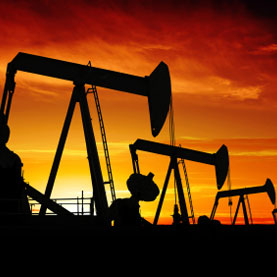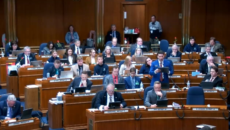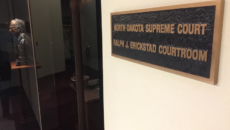ND Democrats Cooked Oil Production Numbers To Attack Tax Reform

Yesterday North Dakota Democrats sent out a press release (see below) making some wild claims about the fiscal impact of SB2336, which is a Republican bill to simplify and eventually lower oil taxes. According to the Democrats, SB2336 will “cost” the state billions in tax revenues.
I have an objection to the idea that tax reductions “cost” the state anything. That’s coming from the perspective that taxes should be based on ability to pay, rather than government need. That’s a backward way of looking at the situation. If the government doesn’t need the money – and with revenues up more than 64% in North Dakota over last biennium so far – then taxes should be lowered.
But I digress.
In looking at how the Democrats arrived at their numbers, there are some serious problems which I wrote about yesterday. But I also reached out to Lynn Helms, director of the Department of Mineral Resources, and asked his opinion of the numbers Democrats used. He pointed out that the Democrats’ production numbers are inflated.
Helms notes that Democrats claim annual production in the state will be 585,270,000 barrels in 2021, which works out to 1.6 million barrels per day, but what Helms describes as the “consensus model” for future oil production in the state has the state peaking at 850,000 to 1.5 million barrels per day before the five-year window for this tax.
Here’s the chart from the Democrat press release:
North Dakota has a lot more than 1750 wells. The January ending number was 8,322 wells actually producing with monthly production of 22,878,682 barrels or 89 barrels per day per well.
The 1750 wells per year is an attempt to capture the development phase of the Bakken when lease expirations are no longer driving the rig count and all of the other factors like cost savings and weather play in. Today’s rig count is 185 and if everything went perfect including frac crews keeping pace they could drill and complete a maximum of 2,220 wells per year.
I am not familiar with the decline curve model used by the Tax Department, but one simple check is the 585,270,000 barrels annual production from new wells in 2021 = more than 1.6 million barrels per day. Even if production from all the wells drilled before 2017 declines 50% from our budget projection of 850,000 barrels per day that would put total state production at well over 2 million barrels per day. Only one other model I’ve seen approaches such high volumes. The consensus models peak at 850,000 to 1,500,000 barrels per day total from all wells pre 2017 and post 2017.
In short, Democrats manufactured a big scary number for their press release by inflating future oil output. Fortunately for them and their political agenda, the North Dakota media swallowed their projections without checking their veracity.
It’s worth noting that the “consensus model” Helms is talking about makes the case for a reduction and simplification of the oil tax. Oil production is likely to peak before 2017 as most of the prime wells are drilled. From that point exploration activity will have to spread out into other, less productive areas of the Bakken formation which will be much more expensive (and thus much less profitable) to explore. So it makes sense, as that transition happens in the future, for the state to lower tax burdens.
That and the fact that the state is already awash in cash and can afford to give some back to the oil industry as well as the other businesses and individual taxpayers.








